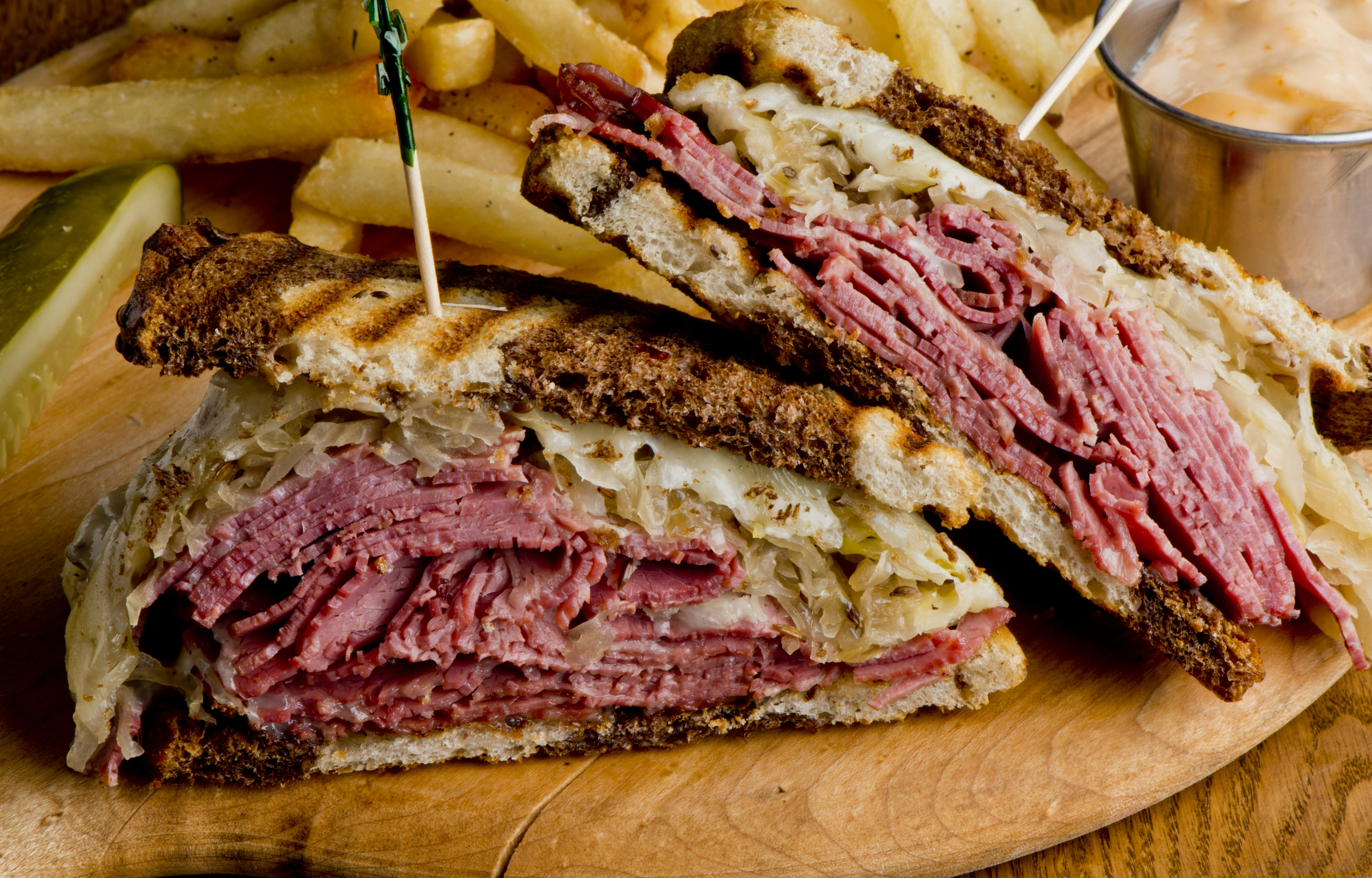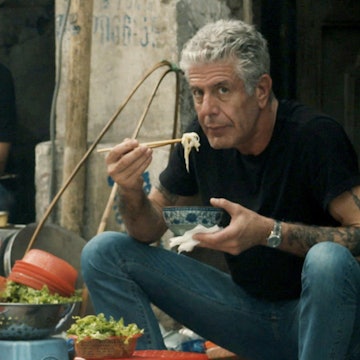

An impromtu trailside snack of non bread, kaimak (cream) and kurort (dried yoghurt balls), Murdash Valley, Alay Region
In Dorset, England, a 1,000 year old flour mill that was most recently accustomed to turning the heads of tourists rather than turning wheat is back on its old grind again. For the first time in 50 years, the Sturminster Newton Mill is responsible for serious production of flour – a pantry staple that's been flying off shelves ever since the COVID-19 pandemic rocked the globe.
Now that so many people in countries around the world are staying home, and trying to stretch the contents of their kitchen cabinets between visits to the grocery or food pantry, homemade bread is a resourceful new hobby that's keeping many busy in their kitchens. From banana bread to sourdough, home cooks are kneading, proofing, and baking their way through quarantine – so much so that even small mills like Sturminster have been called back into service.

There are a lot of reasons for the flour frenzy, from tight budgets to a surplus of time. Then there are the more esoteric, yet time-honored links we have to bread – the comfortable rhythm of kneading dough, the connection to an ancient practice, the pleasure of seeing your hard work tangibly pay off as you tear off hunks of hot, fresh-from-the-oven chunks.
After all, people have been baking bread around the world for a lot longer than even the Sturminster Mill has been in business. Bread is baked into ancient languages around the world. The word "companion" even comes from the Latin pan, meaning "bread or food." Roti, a type of Indian bread, was discussed in 10th-century Indian texts, and the term itself goes back to ancient Sanskrit. And bread is important not just etymologically, but in idioms, too, like the Russian greeting "Хлеб да соль!" or "Bread and salt!"
If you've still got a little stash of flour or luck into finding some at the store and want to use your ground grains to travel, try one of these types of bread from around the world.

Mantou – China
These days, when you think Chinese food, you often think of rice as the primary grain in the cuisine before you think of bread. But buns called mantou have as just as firm a place on the Chinese table, particularly in northern, wheat-growing regions. They're an essential component of street food sandwiches called bao, and dim sum favorites like the saucy pulled pork cha siu bao.
They've even been used in warfare, according to one legend about the origin of the name mantou, which can be translated as "barbarian head." According to food expert Eileen Guo, the story goes that warrior Zhuge Liang floated 50 puffy steamed loaves down a river in China to create the illusion that they were decapitated heads in order to appease the river gods.
What makes mantou so unique isn't the ingredients – this bread still involves flour, sugar, yeast, salt, and water, prepared by kneading and rising. Instead of baking mantou, however, the loaves are steamed, giving them an exceptional puffy texture. This recipe is a good place to start, though there are many variations.
Focaccia – Italy
While sourdough is the clear star of the pandemic baking zeitgeist, the flat, fluffy northern Italian bread known as focaccia has also proved extremely popular because of its versatility and ease of preparation. The name focaccia comes from the Latin word for hearth, where early iterations of this bread were baked by the Romans. You might recognize the version often inflected with rosemary or other herbs served as table bread at your favorite red-sauce restaurants. It can also be used in lieu of traditional crusts as the base for pizza.
There are a variety of recipes and numerous regional variations, but most focaccia blend yeast, flour, salt, a small amount of sugar, and olive oil to create the classic texture and flavor. From there you can play around with adding herbs, olives, fruit, or other ingredients. This recipe is a good place to start with a simple, no-frills focaccia.

Chapati – India
One of the oldest forms of bread in the world, and a staple throughout India, Africa, and parts of the Middle East, chapati is firmly baked into human history. Archeologists have found evidence of chapati in the Indus Valley, dating back to the Bronze Age. Much more recently, colonialism spread chapati into new regions like Kenya and even the Caribbean. These little flatbreads even shook the British empire to its core in 1857 when rapid overnight distribution of chapatis hidden in runners' turbans from city to city were assumed to portent a mass revolt, an event known as the Chapati Movement.
Because chapati are unleavened, the recipe comes together almost instantaneously. You do need a special type of high-gluten flour, however, known as atta flour, which is easy to find at most Asian groceries or Indian markets. The word chapati itself comes from the Hindi for "slapped," referring to the way it's kneaded in the baker's hands and then shaped by passing back and forth between the palms. This recipe will get you started on this Indian essential.
Soda Bread – Ireland
Though its origins may truly be more American than Irish, soda bread become synonymous with The Emerald Isle starting in the mid-19th century. This bread requires no kneading or yeast to make, and instead relies on cheap, shelf-stable baking soda for its rise. The British introduced that product to Ireland during colonial rule, while the other key ingredient – buttermilk – was plentiful in Irish dairies. Soda bread also requires no oven, and can be cooked directly on the hearth, another reason it became so popular with poor Irish tenant farmers, who hardly had plethora of kitchen equipment. For traditional recipes, visit the Society for the Preservation of Irish Soda Bread.

Pumpernickel - Germany
Because rye is a hardy grain that grows well even in frigid winters, it became a popular crop not only in its native Turkey but also in Germany, Poland, the Ukraine, Lithuania, Russia, as well as Scandinavia. Over time, the geography of the Rye Belt lead to rye breads becoming an integral part of Jewish foodways, and their continued use in deli, piled high with other Eastern European favorites like brisket, pastrami, corned beef and liverwurst. In Scandinavia, it's often enjoyed with fish or cheeses like brunost.
Rye produces, even when blended with wheat flour, a denser, darker loaf with a nutty or sour flavor – the later thanks to the long time rye breads need to rise, and how well they lend themselves to fermented styles like sourdoughs. Often, rye breads are punctuated with bright caraway or fennel seeds.
Pumpernickel in particular is an especially dense, dark rye style to come out of the Westphalia region of Germany. Coarse ground, low on gluten, and chewy, pumpernickle's name comes, unflatteringly, from a phrase meaning "the Devil's fart." Despite the ignoble title, however, it's endured as a popular and flavorful loaf. While there are numerous recipes you can try, this recipe will give you a taste of the traditional pumpernickel making process.
Frybread - North America
Traditionally, indigenous cuisines in North America were often based on beans, squash, and corn rather than bread. But the uniquely American dish known as frybread became a staple and cultural touchstone for many tribes, particularly the Navajo, during a period of forced removal from their ancestral lands to reservations, and cultural assimilation at government run boarding schools.
It's a simple recipe based easily preserved staples, combining white flour with water, a leavening agent like baking powder or yeast, and a little salt. The batter is deep fried in oil or lard, and the resulting frybread is eaten sweet or savory, depending on the toppings. Frybread can also be used like a thick tortilla to make Indian Tacos.

Injera – Ethiopia
Africa is full of grains and starches found in few other places that make for unique cuisines. In Ethiopia, a grain called teff is the backbone of injera, a staple bread that's used to scoop up stews and sauces. Like other flatbreads, injera is unleavened and traditionally cooked over an open flame on a broad, flat pan. Rather than the fluffy texture you might expect from a loaf of bread, or the classic "puff" of pita bread, however, injera is more pancake like and spongy. You can learn to make it using this recipe from Lonely Planet's own Travel Kitchen series.
Matzo – the Middle East
Rye styles aren't the only bread with deep ties to Jewish culture. Matzo is one of the most important dishes in the Jewish kitchen, held sacred as part of the Passover seder. Every year during Passover, observant Jews prepare this unleavened style of bread in honor of their ancestors, who fled persecution and slavery in Egypt. According to tradition, Moses' people left Egypt in such a hurry that their bread did not have time to rise, leading them to make this unrisen matzo to eat along the way.
To this day, Jews continue to make matzo on Passover to remind them of that hardship. But all but the most strictly observant incorporate matzo meal into dishes like matzo brei and matzo ball soup that are enjoyed year round. If you aren't worried about keeping kosher, try this recipe to get a taste of a bread with a long and continuing tradition.

Tortillas – Mesoamerica
Like chapati, tortillas are an incredibly ancient bread, dating back thousands of years to the Maya civilization. Corn was incredibly important to Mesoamerican people, even featuring in their origin myths, and was a crucial staple of their diets. Today, it's still the backbone of many Mexican dishes that blend indigenous and Spanish ingredients and culinary styles.
Tortillas were made from corn that had been through nixtamalization, a Nahuatl term for soaking corn in alkaline water made from lime (not the fruit) or lye to remove mycotoxins from natural corn molds, add calcium, and make the corn easier to grind. Once the masa was formed by blending the nixtamal with water, the dough was pressed flat and cooked.
The resulting thin, flat breads we know as tortillas went by many names in the pre-Columbian era, including the Nahuatl word tlaxcalli. But when the Spanish arrived at the turn of the 16th century, they called this dish tortillas, coming from their word for cake. They also introduced wheat, which eventually lead to the invention of the flour tortilla. If you want to make a traditional corn tortilla from scratch, however, all you need is this simple recipe.
Damper – Australia
Every corner of the world has its own version of bread, including Australia. There, indigenous Australians used millet and spinifex grains and other native seeds to make flour ground by hand on large stones. Many of these grindstones have been uncovered by archeologists, some dating back as far as 36,000 years old, suggesting Aboriginal Australians were baking long before other groups of humans.
Researchers suspect that these ancient breads were leavened using fermentation methods similar to sourdough ryes, before being baked directly in the coals of campfires – a technique later adopted by European cattle drivers in the bush, who started calling this style of bread "damper," after what it does to your appetite. Even if you don't have access to Australia-specific grains and seeds, you can try making your own damper using this post-colonial recipe.

Pita – North Africa & the Middle East
Another ancient form of bread, pita has been a part of Middle Eastern and North African cuisines for four millennia. In fact, in 2018, archaeobotanist Amaia Arranz-Otaegui unearthed a 14,000 year old piece of bread from a Epipaleolithic excavation in Jordan – the oldest known crumbs in the world, likely the remains of a pita.
Flatbreads have been made from a variety of grains, from einkorn to barley and even riverside tubers, since Neolithic times. The pita you enjoy with dishes like hummus, shwarma, and gyro, however, is typically made from wheat, and can easily be prepared even in home ovens – no special equipment required. Try this recipe, and enjoy your own fresh-made pita – especially if you can get them to pop.
Bannocks – Scotland
Whether you learned about bannocks from a family recipe, a trip to Scotland, or the popular Outlander series, this traditional bread has deep roots in both the Scottish Highlands and amongst indigenous peoples in Canada. The word bannock comes from the Gaelic word for morsel, and like other daily breads are cooked right on the hearth, rather than in the oven.
That made them easy to transfer to the Canadian frontier in the 18th and 19th centuries, where Scottish trappers encountered Native peoples who made bannocks their own much as tribes further south adopted frybread as part of their foodways. Bannocks are simple to make, keep well, and make for excellent camping or road cuisine, as well as breakfasts at the kitchen table slathered in butter and jam. You can make a classic version using this recipe.
You may also like: Ultimate eats: the world's top 10 food experiences
Destination Drinks #40: Kvas
Take a tea tour around the world with these six traditional brews













